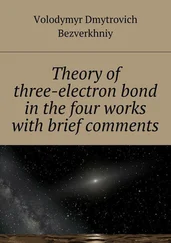135 130
136 131
137 132
138 133
139 134
140 135
141 137
142 138
143 139
144 140
145 141
146 142
147 143
148 144
149 145
150 146
151 147
152 148
153 149
154 150
155 151
156 152
157 153
158 154
159 155
160 156
161 157
162 158
163 159
164 160
165 161
166 162
167 163
168 164
169 165
170 166
171 167
172 168
173 169
174 171
175 172
176 173
177 174
178 175
179 176
180 177
181 178
182 179
183 180
184 181
185 182
186 183
187 184
188 185
189 186
190 187
191 188
192 189
193 190
194 191
195 192
196 193
197 194
198 195
199 196
200 197
201 198
202 199
203 200
204 201
205 202
206 203
207 204
208 205
209 206
210 207
211 208
212 209
213 210
214 211
215 212
216 213
217 214
218 215
219 216
220 217
221 218
222 219
223 220
224 221
225 222
226 223
227 224
228 225
229 226
230 227
231 228
232 229
233 230
234 231
235 232
236 233
237 234
238 235
239 236
240 237
241 239
242 240
243 241
244 242
245 243
246 244
247 245
248 246
249 247
250 248
251 249
252 250
253 251
254 252
255 253
256 254
257 255
258 256
259 257
260 258
261 259
262 260
263 261
264 262
265 263
266 264
267 265
268 266
269 267
270 268
271 269
272 270
273 271
274 272
275 273
276 274
277 275
278 276
279 277
280 278
281 279
282 280
283 281
284 282
285 283
286 284
287 285
288 286
289 287
290 288
291 289
292 290
293 291
294 292
295 293
296 294
297 295
298 296
299 297
300 298
301 299
302 300
303 301
304 302
305 303
306 304
307 305
308 307
309 308
310 309
311 310
312 311
313 313
SCIENCES
Mathematics , Field Director – Nikolaos Limnios
Queuing Theory and Applications , Subject Head – Vladimir Anisimov
Queueing Theory 2
Advanced Trends
Coordinated by
Vladimir Anisimov
Nikolaos Limnios

First published 2020 in Great Britain and the United States by ISTE Ltd and John Wiley & Sons, Inc.
Apart from any fair dealing for the purposes of research or private study, or criticism or review, as permitted under the Copyright, Designs and Patents Act 1988, this publication may only be reproduced, stored or transmitted, in any form or by any means, with the prior permission in writing of the publishers, or in the case of reprographic reproduction in accordance with the terms and licenses issued by the CLA. Enquiries concerning reproduction outside these terms should be sent to the publishers at the undermentioned address:
ISTE Ltd
27-37 St George’s Road
London SW19 4EU
UK
www.iste.co.uk
John Wiley & Sons, Inc.
111 River Street
Hoboken, NJ 07030
USA
www.wiley.com
© ISTE Ltd 2020
The rights of Vladimir Anisimov and Nikolaos Limnios to be identified as the author of this work have been asserted by them in accordance with the Copyright, Designs and Patents Act 1988.
Library of Congress Control Number: 2019957522
British Library Cataloguing-in-Publication Data
A CIP record for this book is available from the British Library
ISBN 978-1-78945-004-0
ERC code:
PE1 Mathematics
PE1_21 Application of mathematics in industry and society
Vladimir ANISIMOV1 and Nikolaos LIMNIOS2
1Amgen Inc., London, United Kingdom
2University of Technology of Compiègne, France
Queueing theory is a huge and very rapidly developing branch of science belonging to probability theory and stochastic modelling that originated a long time ago from the pioneering works by Erlang (1909) on the analysis of the models for telephone communication using Poisson processes. Later on, these results were extended further in different directions in the works of such famous mathematicians as Pollaczek, Khinchin, Kendall, Kleinrock and many others.
Nowadays, queueing theory is rapidly growing in various areas including a theoretical analysis of queueing models and networks of rather complicated structure using rather sophisticated mathematical models and various types of stochastic processes. It also includes very wide areas of modern applications: computing and telecommunication networks, traffic engineering, mobile telecommunications, etc.
The aim of this second volume, together with Volume 1, is to reflect the current cutting-edge thinking and established practices in the analysis and applications of queueing models.
This volume includes 8 chapters written by experts well-known in their areas.
Two chapters, Chapters 1and 7, are devoted to investigating a stability analysis of some types of multiserver regenerative queueing systems with heterogeneous servers and a regenerative input flow using synchronization of the input and majorizing output flows; and a stability analysis of regenerative queueing systems based on a renewal analysis technique, which is illustrated on classical GI/G/ 1 and GI/G/m queueing systems.
Chapter 2considers a few selected queueing models that are useful in service sectors using both analytical and simulation approaches; and highlights the significant role played by the correlated arrivals, which may occur due to the fact that customers/jobs arrive from different sources. Some interesting observations based on the analytical models of some well-known queueing systems are also reported.
Chapter 3is devoted to the discussion of similarity between probability distributions and random processes related to queueing and reliability models and their use in economics, industry, demography, environmental studies. Some open and challenging new problems for further research directions are marked, as well as various possible areas of practical applications.
Chapter 4is devoted to an important problem of how a social planner or a monopolist should act to incite customers to adopt a desirable behaviour, that is, to increase the social welfare or the monopolist’s revenue/profit, respectively, using the concepts of free market. Several techniques for the control of information in queueing systems and their impact on strategic customer behaviour using different mechanisms, e.g. pricing structures, priority systems and non-standard queueing disciplines, are considered and illustrated using various examples.
Chapter 5is devoted to applications of Renyi’s and Tsallis’s non-extensive maximum entropy methods of inductive inference for the analysis of state probabilities of the stable M/G/ 1 queue with long-range interactions (heavy tails) of order q (0.5 < q > 1). Consequently, novel q-dependent state probabilities of the M/G/ 1 queue with heavy tails are derived by maximising the respective non-extensive maximum entropy functionals. Some numerical examples are considered.
Читать дальше













